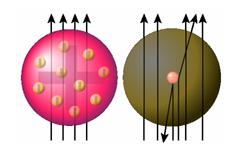 Digital News Report – Scientists with the ALPHA experiment at CERN say they are closer to “bottling” antimatter. Research published in the journal Nature online may help prove that a whole other non-observable universe exists.
Digital News Report – Scientists with the ALPHA experiment at CERN say they are closer to “bottling” antimatter. Research published in the journal Nature online may help prove that a whole other non-observable universe exists.
Antimatter particles have always been illusive. The ALPHA experiment involves hydrogen. “I’ve always liked hydrogen atoms,” said Walter Hardy of the University of British Columbia a leading expert in atomic hydrogen studies.
Hardy and his team were successful in storing antimatter atoms for over 16 minutes. That is 5,000 times longer than previous experiments.
Antimatter is similar matter except the electrical charges (polarities) are different. For example, a positron is similar to an electron, but is positively charged. The antimatter concept dates back to an article in Nature by Arthur Schuster. That was 1898. By 1929 Charles Janet had produced an antimatter periodic table.
Now that they can bottle antimatter, the next step is to study its behavior. Scientists want to find out if both matter and antimatter hydrogen fall the same way because of gravity.
“It’s ironic that we are now trying to measure the same properties of antihydrogen that I measured many years ago on regular hydrogen,” Hardy said. “It is a crucial comparison, though, and will tell us if we truly understand the relationship between matter and antimatter.”
By Tim Edwards
Science Writer
Photo: Top: Expected results: alpha particles passing through the plum pudding model of the atom undisturbed.
Bottom: Observed results: a small portion of the particles were deflected, indicating a small, concentrated positive charge. Note that the image is not to scale, in reality the nucleus is vastly smaller than the electron shell.
